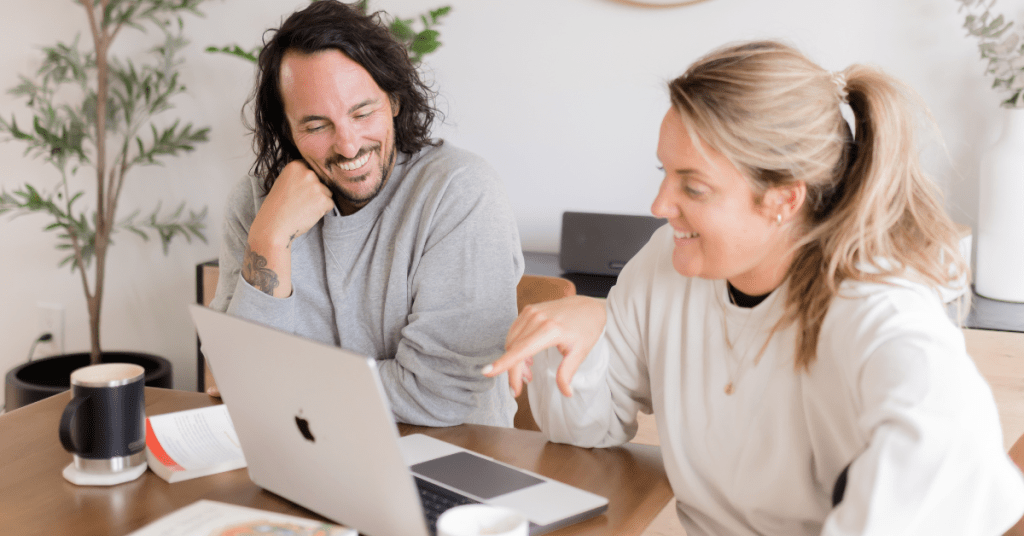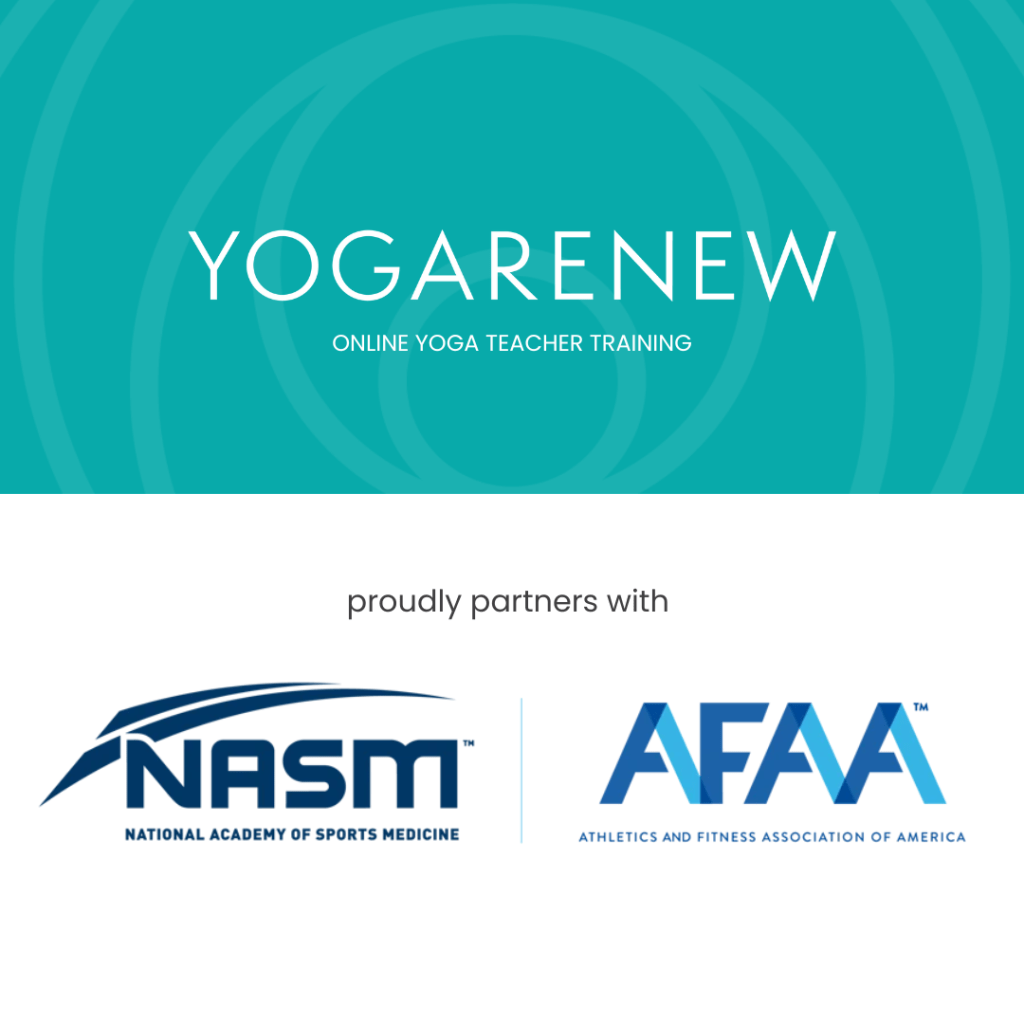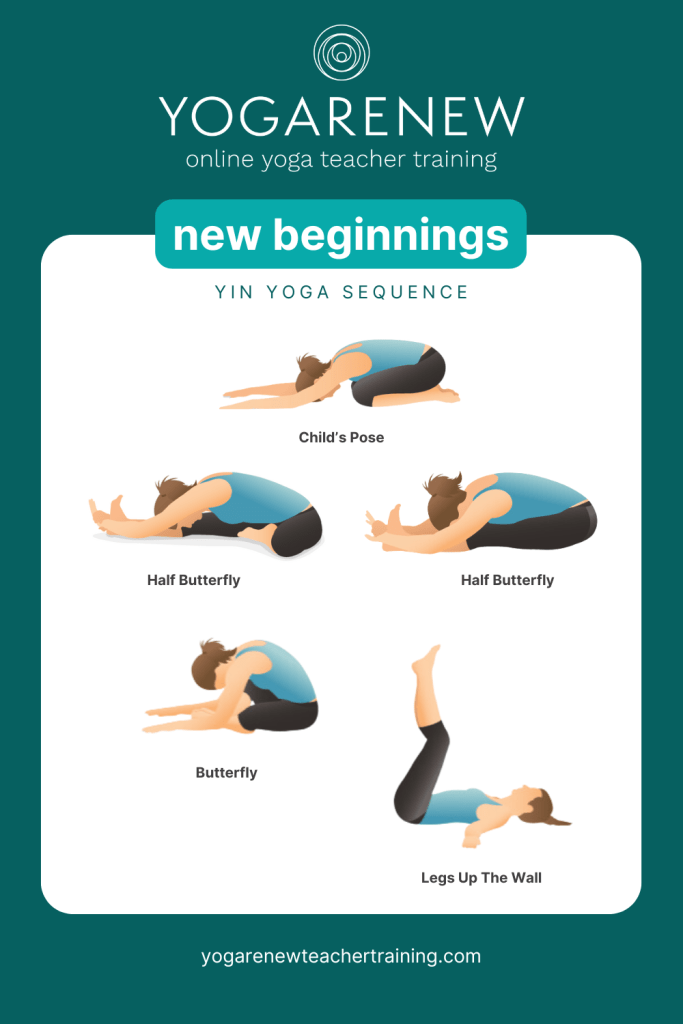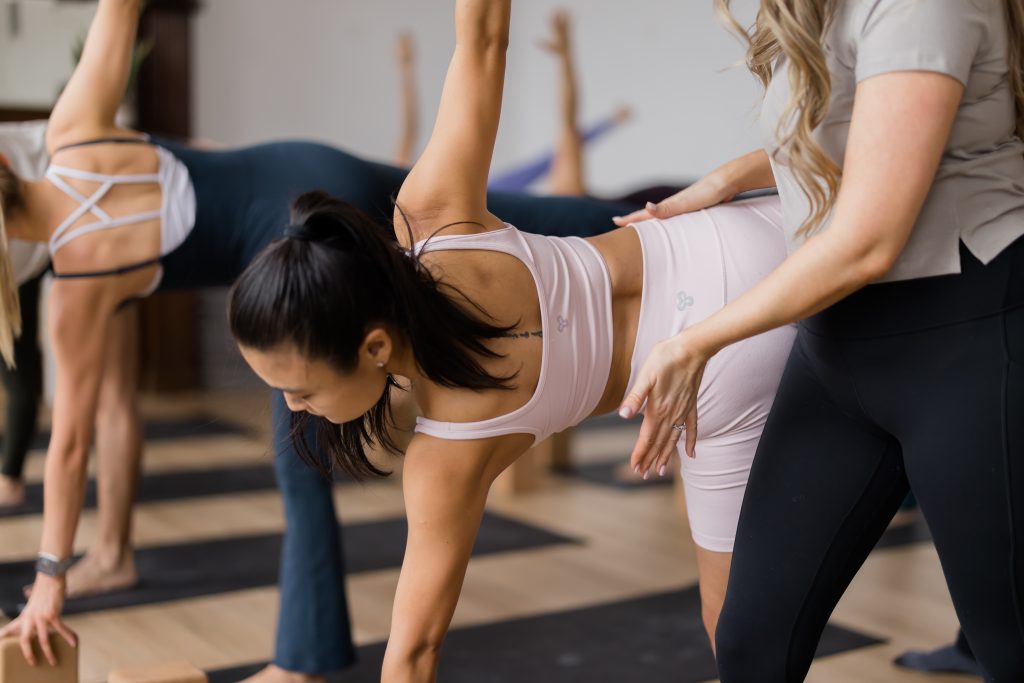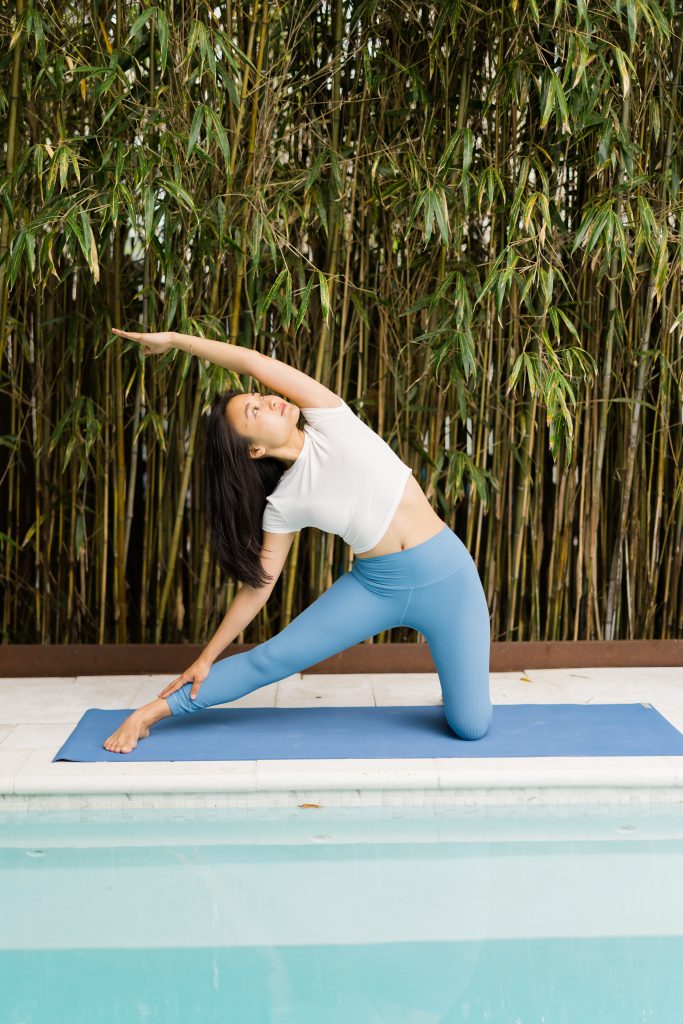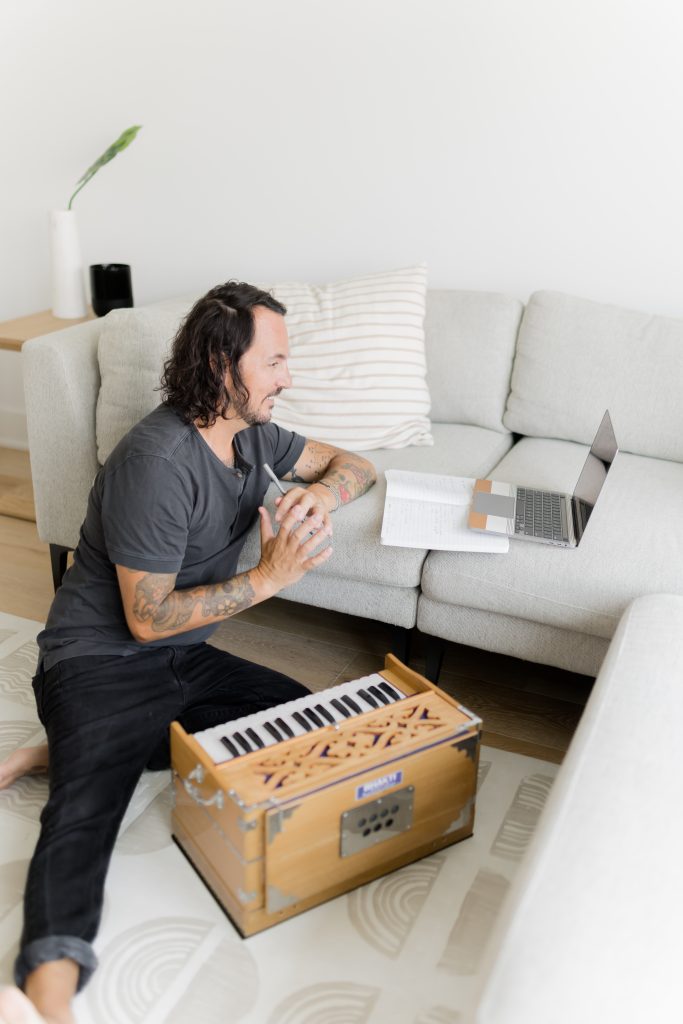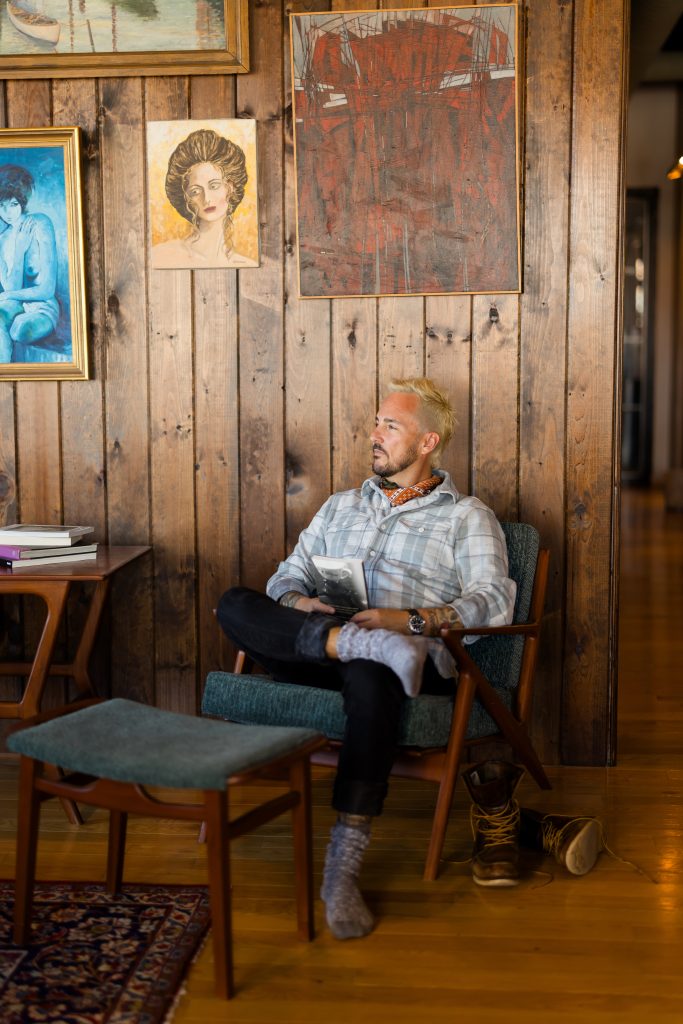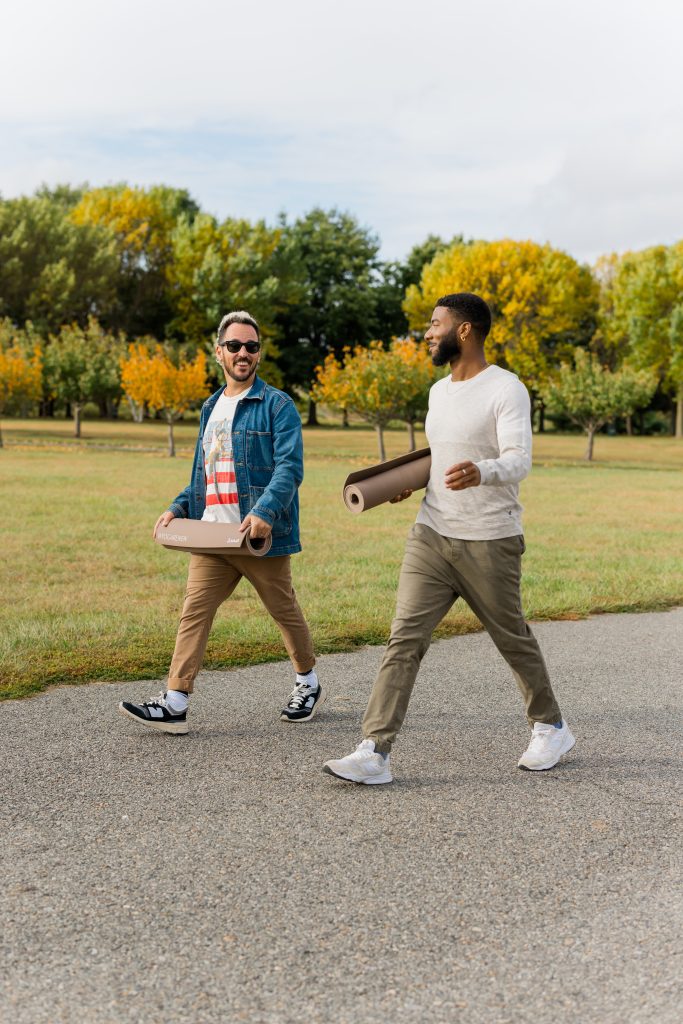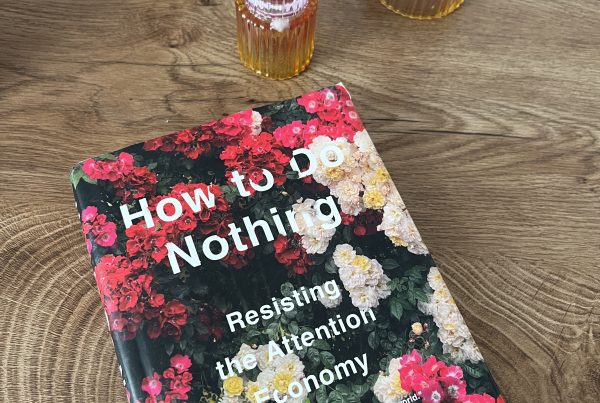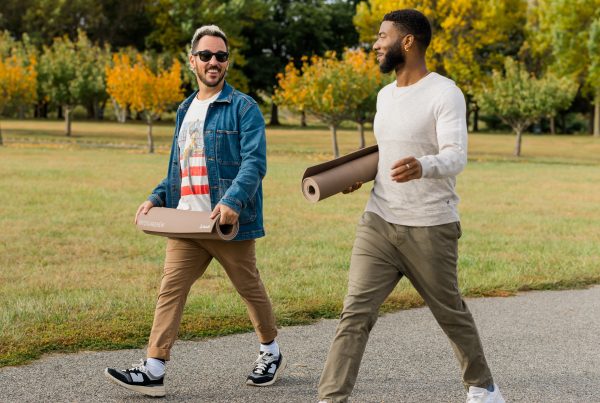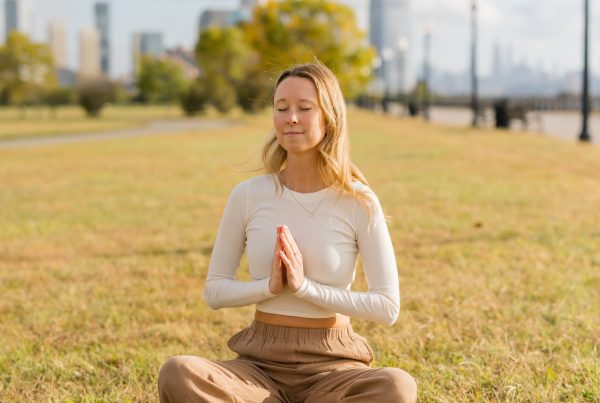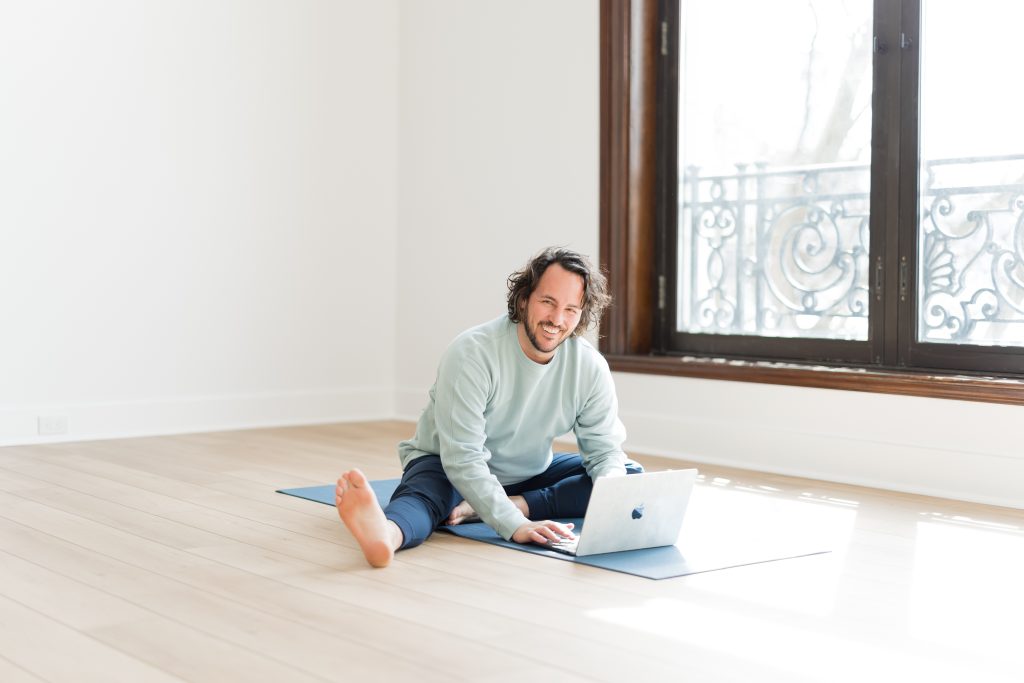
In the ever-changing landscape of the digital world, it can be hard to find yoga classes online that you enjoy and that elevate your practice. If you’ve ever taken class with us, or have joined one of our trainings, you’ll notice YogaRenew has a specific style of sequencing designed to keep students invigorated, inspired and help give them an idea of what to expect in each class — starting with puttering, working towards a peak pose, having a full wind down section and of course, a blissful savasana.
Below you’ll find an incredible selection of online yoga classes you can practice for free, whenever your schedule allows. You can even browse different categories if there’s a specific style of yoga you’re looking for. Aside from our list of the best free yoga classes on YouTube, we’ve developed an app where you can stream high-quality yoga classes with incredible soundtracks for free with our instructors.
With the YogaRenew app, you can access over 200 FREE yoga classes & pose tutorials. And its Ad-free. Download the YogaRenew app below and check out all of our free classes, or head further down to check out our list of the best free yoga classes on YouTube!

Access Hundreds of Free Online Yoga Classes
Whether you’re a beginner or advanced yogi, the YogaRenew app has hundreds of free classes & tutorials from yoga’s best instructors. Explore classes with incredible soundtracks based on your experience level, goal, intensity level or duration. Save your favorites or watch offline with a free account. Or subscribe and gain access to over 1,000 on-demand classes, courses, workshops, live classes, exclusive events and more.
The Best Free Yoga Classes on YouTube
Scroll down to browse our list of the top free yoga & meditation classes available on YouTube. We’ve conveniently sorted them by style or format so if you’re unsure which style suits you best, take a moment to check out our article on the different types of yoga. If you’re looking to practice with an app, you can check out our list of the best free yoga apps.
Yoga Basics (Fundamentals of the Practice)
Using Yoga Props
In this video, Patrick explains how props can be an essential tool in the yoga practice. Our channel offers insights as well as tips and tricks of becoming a great teacher but also expanding as a practitioner. This information can be greatly helpful before stepping on your mat.
Best Free Vinyasa Yoga Classes Online
Perhaps the most popular style of yoga in modern times, Vinyasa is characterized by energetic flows and dynamic body movements. Each movement in a Vinyasa Yoga is linked to the breath, providing a more cardio-centric experience. Check our list of the best free vinyasa yoga classes on YouTube below.
60 Minute Vinyasa Flow | Free Online Yoga Class
Instructor: Patrick Franco
Length: 60 Minutes
Style: Vinyasa Yoga
Fresh Air Flow in Hawaii | No Props Needed
Instructor: Desiree Fiorentino
Length: 30 Minutes
Style: Vinyasa Yoga
Live Music Vinyasa Flow
Instructor: Patrick Franco
Length: 30 Mins
Style: Vinyasa Yoga
Yoga for Your Core
Instructor: Desiree Fiorentino
Length: 15 Mins
Style: Vinyasa Yoga
Best Free Online Meditation
Meditation comes in many different formats, each with their own intended results. Whether you’re looking to drift off to sleep or wrap yourself into a warm sound bath – we have you covered. Find our list of the best free meditation classes available on YouTube below.
5 Minute Body Scan Meditation | YogaRenew
Instructor: Lindsay Monal
Length: 5 Minutes
Style: Body Scan Meditation
Meditation For Sleep | YogaRenew
Instructor: Joe Miller
Length: 14 Minutes
Style: Meditation
Sound Bath & Meditation | YogaRenew
Instructor: Lindsay Monal
Length: 23 Minutes
Style: South Bath & Meditation
Best Free Restorative Yoga Classes Online
Restorative yoga classes are typically prop-heavy, slow paced classes designed to help the body recover, replenish and recuperate. Find our list of the best online Restorative Yoga classes on YouTube below.
Restorative Yoga | Restorative Energy Practice
Instructor: Joanne Silver
Length: 30 Mins
Style: Restorative Yoga
Restorative Yoga | Yoga For Anxiety
Instructor: Keely Garfield
Length: 15 Mins
Style: Restorative Yoga
Best Free Yin Yoga Classes Online
Yin Yoga classes are slow-paced, relaxing classes designed to target deeper connective tissue. Find our list of the best Yin Yoga classes on YouTube below.
Morning Yin Yoga Class
Instructor: Kate Lombardo
Length: 35 Minutes
Style: Yin Yoga
Balancing Yin Yoga for Ultimate Relaxation | Free Online Yoga Class
Instructor: Lindsay Monal
Length: 70 Minutes
Style: Yin Yoga
Best Free Hatha Yoga Classes Online
Hatha yoga is meant to encompass all physical postures within traditional yoga, however modern definitions often characterize this practice as a slower paced class with emphasis on posture and breath.
Yoga for a Strong & Flexible Spine
Instructor: Joe Miller
Length: 30 Mins
Style: Hatha
Teach a Hatha Style Class to Virasana (Hero Pose)
Instructor: Deidra Demens
Length: 60 Mins
Style: Hatha
Best Free Prenatal Yoga Classes Online
Prenatal Yoga classes are designed to help aid in the body’s transformation through pregnancy, delivery and postnatal. Their structure is designed to accommodate and supplement the pregnant body at each stage of pregnancy. Find our list of the best Prenatal Yoga classes available on YouTube below.
Prenatal Yoga for Acid Reflux
Instructor: Melie Purdon
Length: 15 Mins
Style: Prenatal Yoga
Prenatal Yoga for Labor
Instructor: Melie Purdon
Length: 16 Mins
Style: Prenatal Yoga
Best Free Gentle Yoga Classes Online
As the name suggests, gentle yoga classes take a more gentle approach to the practice. Find our list of the best gentle yoga classes on YouTube below.
Yoga for When You Don’t Feel Like Doing Yoga
Instructor: Lindsey Rozmes
Length: 20 Minutes
Style: Gentle Yoga
Beginner Yoga – Gentle Floor Sequence
Instructor: Patrick Franco
Length: 20 Minutes
Style: Gentle Yoga




